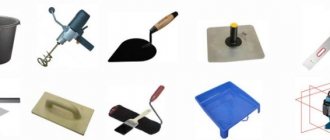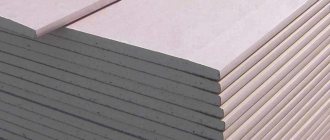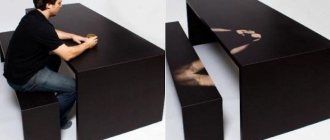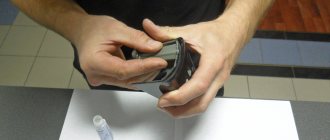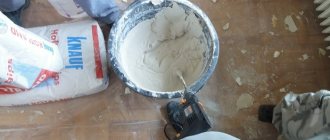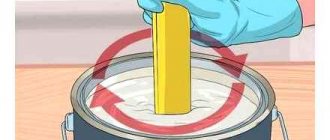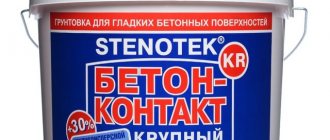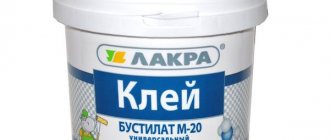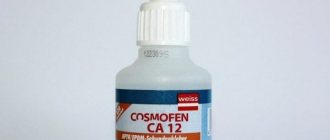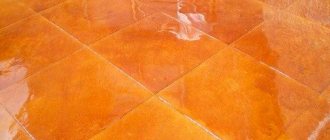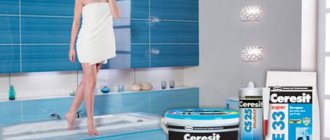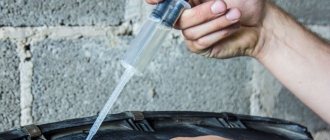“As long as there is a Colosseum, there will be Rome; if the Colosseum disappears, Rome and the whole world will disappear!” - claimed the pilgrims of the eighth century. Erected in 80 AD, it has survived to this day and still amazes with its monumentality and splendor. Viaducts, overpasses, palaces and administrative buildings, many houses of residents - archaeologists find all this in a well-preserved condition, despite the passing centuries. What is this architectural wealth built from? Let's try to answer this question.
What is travertine
Tibur stone is a sedimentary polycrystalline rock consisting of minerals and carbonate layers of carbon dioxide solutions. Another name is calcareous tuff. The formation process is associated with the precipitation of active elements from streams of different mineralization and temperature. As a result of these geochemical transformations, calcium carbonate is formed - a rock-forming component that is insoluble in water. In caves it is found in the form of stalactites and stalagmites. Common in finishing repairs and construction of buildings, as well as in agriculture.
Origin and properties of travertine
There are large deposits of travertine in Germany, Italy, and Turkey in Pamukkale. Major exporters of this natural mineral are Iran, Greece, Romania, Portugal, USA, Mexico, Argentina and Peru. In Russia, the largest deposits of this stone are located near the city of Pyatigorsk and on the Kamchatka Peninsula.
In areas of volcanic activity, groundwater, before flowing to the surface, often turns out to be saturated with carbon dioxide, heated by the heat of magma, and compressed by monstrous mountain pressure. Passing through deposits of limestone or chalk, the water masses are enriched with calcium salts.
Escaping from the depths, water loses carbon dioxide, dissolved calcium carbonate precipitates. Layers of sedimentary material gradually form near the source. This is travertine.
The density, color, and structure of travertine depend on many factors. The initial temperature of the water, the concentration of carbonic acid in the solution, the intensity of solar radiation at the point of spouting - the influencing factors are innumerable.
The best properties of travertine are formed in stagnant waters. The density of the mineral is lower in places where water has to flow. The presence of mollusks and other organisms in the reservoir leads to the inclusion of shells, biological remains, and bones in travertine - which leads to a decrease in the homogeneity of the material.
Physico-chemical characteristics
In detail, the formation of this porous fine-grained agglomerate from salt sediments deposited at the bottom of reservoirs requires a long period of time and high pressure. Quality is proportional to temperature, carbon dioxide, the presence of carbon dioxide in the reaction and exposure to direct sunlight. It differs from limestone (more dense) in its porosity. The chemical composition of travertine is as follows:
- calcium oxide (CaO) – from 33 to 55%;
- silicon dioxide (SiO2) – up to 9%;
- compounds of magnesium, titanium, iron, aluminum, etc. (TiO2, Fe2O3, Al2O3, MgO).
Physical attributes include:
- density 2.3 g/cm3;
- porosity 8 – 18%;
- abrasion without significant frictional effort;
- water absorption by weight up to 3%;
- compressive strength 47 MPa;
- softening coefficient 0.81;
- there is no combustion;
- hardness about 4 (Mohs scale).
Reason #3 – Versatility
An important feature and distinguishing feature of travertine from marble and granite is the porosity of this material. Moreover, contrary to popular belief, travertine does not absorb moisture upon contact between surfaces and from the air, which contributes to the durability of the material. By repelling liquid, the material does not lend itself to geometric deformation, destruction or deterioration of aesthetics. This allows the use of travertine in rooms with any operational load. In particular, travertine will become a real decoration for a bathroom, swimming pool, bathhouse, kitchen, hallway, etc.
Another facet of versatility is the possibility of using travertine in facade decoration. This crystalline rock looks great as the basis of a building’s exterior and as an element of garden decor. This aspect is due to the high frost resistance of the stone.
What does travertine look like?
Travertine with clam prints
The scale of travertine outcrops on the surface is varied. According to their morphology, they can be divided into ridges, shields, covers, bridges, terraces and cascades. Travertine outcrops, formed on the earth's crust from mineral brines, represent an ideal repository of cultural and stratigraphic information of the Quaternary period, often of scientific interest. This criterion is used by paleontologists in their work for a detailed study of prehistoric plants, mollusks and animals.
You can not only see the limestone tuff with your own eyes, but also touch it while in St. Petersburg. During the construction of the Kazan Cathedral, it was used as a building material. Travertine stone was cut down in the area of the village of Pudost near Gatchina. There are a number of varieties installed here, but the most durable type was used. As a result of the influence of the unfavorable urban environment on the elements of buildings, the question of how to preserve it is acute, since the quarry where it was mined is not being developed.
quarry Pudost
If you have a desire to visit the locations, then you should go to the city of Mashuk. According to scientists, prints of the ancestors of living elephants, Trogonteria and Southern, as well as bones and antlers of primitive deer were found in the surrounding area.
Travertine in a modern interior – economical does not mean bad!
07/30/2016 Natural stone is always beautiful and presentable, regardless of which slab and type of rock is preferred.
In addition, natural stone has excellent performance properties due to the set of physical and chemical properties of the rock. However, any natural stone has a single, but very significant drawback - a relatively high price, which is certainly justified. But what to do if you like natural stone, but can’t afford it? There is a solution, use an environmentally friendly, stylish and practical natural polycrystalline material - travertine. We will try to take a closer look at the advantages and features of using travertine in the interior of a home and office together with experienced stone decor masters Jazz Stone.
Where is it mined?
quarry and travertine sample
One of the areal fields on the Caucasus ridge are fields that form local armor shields in the interfluve of the Malka and Gundelen rivers (Kabardino-Balkaria), the maximum dimensions of which reach 300x500 m with a layer thickness of 30 m. Special manifestations include Agamzalinskoye (Transcaucasia), Bakhmyr, (Pamir , Tajikistan), Yellowstone (North America), Baishaytun and Golden Dragon (China), Hammam-Meskoutine (northern Africa) and Nalachevskoe (Kamchatka). Ararat (Caucasus) is considered to be especially large, which is represented by a cloak-shaped outcrop, with an area of 20 km2 and a thickness of 5 to 98 m with a relative thickness of 32 m. The thickest terraces, within 90-100 m, appear in Pammukkale (Republic of Turkey). Peaks are observed in Morocco in the Atlas (Sefrou basin) and are equal to 250 m. The total volume of sediments, for example, on the city of Mashuk is about 0.7 km3.
Deposits in Russia
Open pit mines are located in the Stavropol Territory, in the Leningrad Region in the Gatchina District. Currently not in use.
Excellent construction characteristics appeared in the outskirts of Pyatigorsk, especially in the eastern side - on Mount Zheleznaya, Lysaya, which led to the barbaric development of quarries. But due to the valuable balneological role of underground sources, exploitation was stopped, although the need for the material remains to this day. It is exported to the Russian Federation from neighboring countries.
Deposits in the world
Today, mining is carried out in Argentina, Germany, Greece, Israel, Iran, Mexico, the United Arab Emirates, Peru, Portugal, Romania, Syria, the USA, Tunisia, the Czech Republic and Chile.
The regions where crafts and collectible raw materials are distributed are known for calcite onyxes, called “marble”. Its development is being carried out in Algeria, Afghanistan, Pakistan, Australia, and in the south of the former USSR - in Armenia, Azerbaijan, Turkmenistan, Uzbekistan, Kyrgyzstan, as well as in Tatarstan.
Reason #5 – Excellent insulation properties
Travertine, unlike many decorative materials, has unique insulating abilities. First of all, this is manifested and used when it is necessary to insulate the building. Using travertine for exterior finishing, you can significantly save on building insulation. However, the advantages of stone do not end there, and experts also focus on the noise-insulating properties of the material. Moreover, the latter property manifests itself not only in facade cladding, but also in the case of finishing walls with travertine inside the building.
Properties of the stone
onyx marble
The rock in question is harder than onyx, but inferior to granite. Thanks to its nostril structure, it is characterized by better thermophysical and sound insulating parameters than granite. Due to the absorption of moisture, the agglomerate is unfairly considered unstable to low temperatures in winter. Thus, the material taken from the first layer of the Sary-Tash deposit (Central Asia) has a frost resistance grade of F50, which means 50 freezing cycles and meets GOST and international standards.
It must be understood that testing in different areas will indicate figures that differ in their properties due to the conditions of location in the subsoil.
Finish coating
As a rule, the finished surface has high strength and is resistant to external mechanical influence. But to improve its characteristics and color measurements, it is recommended to use a topcoat. It allows you to improve the quality of the material and transform its appearance. For final finishing, paint, wax, and varnish are used.
Coloring
If you want to change the color of the created coating, it is recommended to use a coloring agent. In practice, two options for painting surfaces with decorative travertine plaster are most often used:
- This involves mixing the color into the solution at the preparatory stage. Only after obtaining the required color of the mixture is plaster applied to the wall. This method is suitable for finishing surfaces of small areas.
- Painting a previously treated surface is considered more convenient. A layer of paint is applied to a completely dry wall using a brush or roller. Moreover, you can make the walls monochromatic, create a pattern, use a game of contrast.
Attention!
After applying the paint, it should be quickly wiped with a dry, absorbent cloth. It will not be possible to completely erase the material, but less of it will remain on smooth areas. Thus, using color contrast, you can emphasize the relief.
The travertine covering can be painted in one color or made two-tone
Varnishing
Applying varnish is used to improve the properties of the coating: increasing wear resistance, resistance to moisture. After varnishing the walls, they are cared for by wiping with an ordinary damp cloth. This makes the cleaning process much easier.
The varnish should be applied to a well-dried coating using wide brushes. There can be several layers, the interval between their application should be at least 4 hours. If desired, you can add dye and decorative fillers to the varnish material.
Apply varnish only after the composition has completely dried
Waxing (waxing)
When applying a layer of wax, the same effect is obtained as when varnishing. The wax mixture is distributed along the wall over the plaster using any available tools. This composition must be applied to the wall in a circular motion: it must penetrate deeply into the travertine plaster. After the surface has dried, you need to remove the remaining mixture using an ordinary rag.
The final finishing of the travertine effect coating is waxing
Where is it used?
Received practical significance in the following tasks:
- as a new search feature for minerals of ore origin;
- for researchers - studying traces of ancient flora and fauna;
- obtaining information about the geological past;
- in construction and crafts;
- for liming soils and feeding birds:
- as an aesthetic link in national parks, reserves and public resorts.
Exterior
Easily amenable to mechanical action, it has a sufficient reserve of strength. This significant circumstance was adequately appreciated and used in the construction of capital structures in the Ancient Eternal City, as already mentioned, the amphitheater, as well as the Church of St. Paul, fountains, the Roman Palace of Justice and many others. During excavations, catacombs were discovered that were used for religious rites and burial of the dead.
In North Caucasian villages, openwork stone fences, borders, foundations and basements, as well as tombstones, crosses and statues were made (Slovakia). In particular, in Italy it is still relevant for creating art installations.
travertine fence
travertine staircase
In the design of houses and residences, travertine for facades has found a second wind. In addition to aesthetics, this agglomerate has other noticeable advantages:
- small weight;
- reliability of fixation;
- frost resistance.
travertine facade
Of course, when facing with travertine, it is important to remember that its strength factor is lower than that of marble, but in comparison with other facing slabs its value is greater. The facade decoration with travertine is distinguished by warm tones and a unique palette.
Interior
Travertine in the interior has earned well-deserved recognition from designers. Thanks to its color variety, it looks elegant in the bathroom, living room or pool area. At the same time, its use inside buildings is justified due to its low resistance to negative external influences. More often, tiles are made for laying on walls and floors, window sills, stairs, countertops or bar counters.
travertine bathroom
Decor
Thanks to fire resistance, environmental friendliness, lightness and ease of processing, travertine fireplaces are serious competitors in their segment. Sculptures, vases, written objects, boxes, stands, dishes, and candlesticks are made from marble onyx. Inlays and mosaic panels are highlighted in a separate direction. It is not for nothing that it is considered a highly decorative material for cladding. The balustrade of the Paris Opera is made from onyx from the Agamzalinsky deposit.
Other areas
A comparative analysis of water extracts and modern samples of mineral waters provides an understanding of the composition, gas and temperature components. This makes it possible to monitor and predict qualitative fluctuations in mineralization. Research carried out by geochemists in 1988 on this topic showed the absence of significant differences in the macro- and microcomponents, and in a number of experiments their complete coincidence.
You can try to make souvenirs from travertine yourself. To do this, you will need to immerse any flower in a mineralized spring for several days and after a week you will get a very beautiful composition. Such a fossilized bouquet can be seen in souvenir shops for guests in Pyatigorsk.
The ground product is being used as a food additive to increase shell thickness in poultry production.
Application of decorative plaster Travertine
- It is recommended that the bases be properly leveled before application; ideally, the walls should be prepared as for painting. But due to the fact that the material contains a fairly large grain, you get a fairly “thick” coating layer that can hide minor unevenness in the preparation.
- since the finishing coating is relatively heavy (approximately 1.7 kg per 1 m2), a fairly large load occurs on the prepared base. In this regard, the walls must be primed with high-quality deep penetration soil. Firstly, the primer will properly strengthen the base, and secondly, it will reduce the absorbency of the substrate, which will give you the maximum opportunity to apply the layer evenly, without joints and sharp, obvious transitions. We recommend using CAP Arreghini Acrilifix. This is done so that over time nothing will peel off or fall off.
- The next step is painting with a special primer with quartz filler. When prepared, this primer gives maximum adhesion, that is, the adhesion of the base and finishing layers. Due to the fact that the soil contains quartz, the layer of decorative plaster Travertine can be applied more evenly, since the grain of the material is distributed between the grains of quartz. Unifix fine fine-grained primer with quartz filler will serve as an ideal intermediate and adhesive coating.
- at the next stage, the material itself is applied directly, that is, decorative plaster Travertine (Travertino CAP). Here you can create a pattern or texture, either with one layer or by applying two layers, it all depends on the desired result.
- and finally the final stage, this is the finishing, protective coating. As a finishing layer, either velature or special protective wax is used. Thanks to velature or wax, you can not only create a protective barrier, but you can add tint, create a glaze effect, a patina effect, antiquity, etc.
If you decide to buy Travertine decorative plaster in Moscow, if you value quality and durability, then you should definitely pay attention to a material such as Travertino CAP from the Italian factory CAP Arreghini.
Note for Travertino plaster
- when creating specific textures (including the “world map”), the application of the finishing layer of Travertine (Travertino CAP paste) must be done with one hand, that is, by the same master;
- technique for working with ready-made pasta, wet on wet;
- Unlike paints, it is more difficult to work with textured materials, so it requires skill, skill, experience, as well as knowledge of the “behavior” of the material;
- Apply finishing layers from corner to corner, without stopping;
- Experienced craftsmen should work with protective compounds, especially if they are tinted in color. Just as when painting with tinted velature or tinted wax, color inhomogeneity and spots are formed on the finishing surface, but an unknowing master will make these spots and transitions as obvious as possible.
- If you decide to buy decorative travertine plaster in a tinted form, especially if red or yellow were used among the tinting pigments, then it is recommended to use this product for its intended purpose in the next two or three weeks. As a rule, tinted compositions cannot be stored for a long time, due to the fact that lime and marble are natural materials, even in a closed container a chemical process occurs, as a result of which the color may change;
- decorative travertine plaster should be purchased with a reserve, since it is recommended to complete the work with material from one batch. There may be differences in tonality from part to part, because the base of the material is natural;
- average consumption is 1.7 kg, but depending on the texture and method of application, material consumption may increase.
Lime is a natural material that, once applied to walls, forms a hard, durable base, and the constant chemical reaction between oxygen and lime, called carbonation, makes your coating harder and more durable over the years.
Properties of decorative plaster Travertine
- Production: Italy - Cap Arreghini SpA;
- Ingredients: natural slaked lime, ground marble of various types, paste-like state, ready for use
- Base color: natural white
- Tinting: tinted according to catalogues, tinting according to individual color is possible
- Vapor permeability: high
- Pollution: low
- Grain size in paste: 1mm - 1.2mm
- Impact resistance: after 30 days
- Drying to touch-free condition: 6-8 hours, complete 24 hours.
- Application of the second layer: after 6-8 hours
- Dry weight: 70-75%
- Dilution: dilution with water is allowed to the desired working condition
- Consumption: one layer 0.85 kg/m2, two layers 1.7 kg/m2
- Temperature regime: it is advisable to work at a temperature of +5 to +25 C
- Tool: clean under water
How to care
Basic care techniques include wet cleaning. You should be especially careful when using travertine when covering walls in the kitchen, since the surface does not tolerate acid. Due to their penetrating power, coffee or tea stains penetrate deeply and are sometimes difficult to remove. Polished and polished is more resistant to aggressive environments, and when using special water-repellent agents based on wax or others, it becomes durable. Any polishing of the laid slab does not threaten the loss of its color.
The richness of the travertine palette is determined by the conditions of origin of the stone
As a rule, travertines are characterized by color variations from white to yellow. White travertine is not polished, which gives its white shade a certain warmth that distinguishes this stone from the cool tone of white polished marble. White travertine gives the rooms a special coziness. But yellow travertines are reminiscent of the intense yellow varieties of Verona marble.
Ideally, the color of travertine is white. Calcium carbonate, which is not mixed with foreign substances, is snow-white. However, in reality, such minerals are extremely rare. Most often, travertine is painted in colors from fawn or beige to brown and walnut.
And although architects prefer to use light-colored travertine in their projects, builders like to work with the darkest stone. Some varieties of dark travertine, maximally saturated with heavy mineral impurities, are comparable to granite in density, strength and abrasion resistance.
Gray travertines, which are often mined, have little remarkable properties. However, the already mined stone undergoes changes, leading to an increase in the quality and cost of the material. In air, travertine darkens (especially if it contains iron salts) and hardens.
Intensely colored travertine is mined in Iran. The pigments that saturate the mineral make it red. From the point of view of decorators, the most interesting travertines are rocks with a nodular or spongy structure. Unevenly colored, with large pores collected in groups, such travertines are extremely picturesque in cladding and carvings.
Using travertine you can create a masterpiece kitchen
Your kitchen is the only room in which you (if you are a woman) spend a fair amount of time, and sometimes bring company there. So why not use travertine here? This could be the back panels behind the sink, countertops, shelves, or flooring - you see, what a wide choice! You can also consider the option of travertine mosaic tiles. Consider hiring a professional to help create a one-of-a-kind design for your kitchen using travertine tiles.
How do you use travertine in your home? If you have ideas and suggestions, leave them in the comments below.
Reason #6 – Possibility of restoration
Travertine is quite resistant to any mechanical influences and weight loads. However, due to high operational loads, the material may lose the luxury and gloss of the natural texture of the stone surface during long-term use. However, this is not a reason to completely replace the floor or wall covering. It is enough just to use hardware restoration techniques and in just a few hours, the material returns its primary aesthetic properties. This is also due to the pliability of crystalline rock.
Features of travertine facades
Travertine is a rock that served as a building material for our ancestors . The Roman Colosseum, built from it, stood for several millennia. Today, travertine is used for exterior cladding of buildings and for interior finishing work. It is popular due to its attractive appearance, as well as its good price-quality ratio.
Shell rock
Shell rock, due to its low density and loose structure, is best secured using special adhesives or concrete compounds. It is porous and absorbs wet compounds well, thereby improving adhesion and adhesion.
Natural shell rock is one of the hits of modern construction. It has long been given the status of the most objective alternative compared to other natural materials suitable as supports for creating load-bearing and non-load-bearing walls. In addition, it makes an almost ideal cladding option.
Despite its many advantages, it is notable for its low price. But most often, decorative shell rock is chosen because of its decorative effect.
Shell rock is produced in several versions, which allows us to distinguish three brands:
- M35, shell rock of very high density;
- M25, suitable for construction of 1-2 floors;
- M15, ideal material for fences and partitions.
When creating structures from shell rock, it is not necessary to make a standard foundation. Since the weight of shell rock is very small, its pressure is minimal.
The stone is very easy to process. If you need to decorate the façade with marble, not only slabs, but also solid blocks will do. It is in this form that it is convenient to deliver it to the site, and there it is cut into the necessary fragments.
To treat the tile surface, several techniques are used:
- Polishing finish;
- Bush hammering;
- Sawing technique.
Types of material
In fact, travertine is not just a small rectangular tile. There are many variations of different shapes and structures that allow you to create a very diverse finish. Travertine is divided into two groups: natural and artificial. Let's look at the features of each of them.
Natural stone This material consists of small tiles that are laid in a mosaic with a certain pattern or creating a pattern. Given the strength of travertine, it can be used not only for wall decoration, but also for laying on the floor. If you want a variety of color shades, then, unfortunately, natural stone is not for you, since there are only three colors: white, cream and light gray.
Artificial material In this case, it is worth noting that there are not only stone-like tiles, but also travertine plaster, imitating its structure. The last option is a very good way to make the wall finishing process faster. Plaster covers the surface of the wall in large fragments that create the effect of laying stone. While tiles are most often made from natural materials, decorative travertine plaster can only be made from artificial materials.
Decorating the outside of the house with liquid travertine
Finishing the facade with liquid travertine is the choice of practical people who do not want to spend huge sums on natural rock. On sale you will find a special decorative mixture of acrylic, which is intended for internal and external cladding work.
When applying the material, the wall becomes like a stone one. Next, a level and a tool are used to apply an even pattern. As a result, we get a wall with symmetrical shapes, similar to natural travertine masonry. The surface fully corresponds to the natural characteristics of the stone.
Cladding the walls of the house with travertine
Our company carries out work of varying complexity on facade cladding with natural and artificial, as well as liquid travertine. The order is completed on time with a turnkey quality guarantee. You can find out the current cost from our managers. You can see travertine photos of houses on our website. The work is carried out by professionals, which allows you to achieve results of any complexity.
Installation of travertine has been carried out for a long time. This material is valued thanks to:
- Noble surface structure. The stone has a relief image that makes the wall original.
- Environmentally friendly material.
- A very durable stone due to its strong mineral structure.
- Economical option - does not require further cosmetic repairs.
- Excellent resistance to high and low temperatures and moisture.
- A variety of shapes, textures and colors. On sale you will find original solutions for facade cladding.
Travertine + Decorating the facade of a house - installation technology, photo of the work
Travertine is a sandy-golden stone that has an uneven texture. This material is in demand in decorative construction work. The technology of installing travertine on the facade is becoming increasingly popular today.
Finishing the facade of a house with this stone allows you to create an excellent result. Travertine can be either natural or artificial. By its properties, the stone is very strong and durable, so it can confidently serve up to several hundred years.
